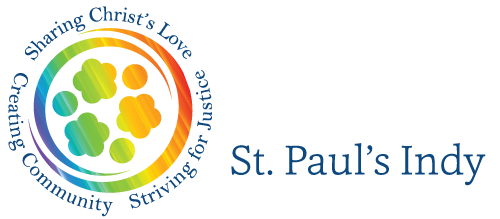Change the lens
This past Sunday, Stephanie and I attended an Indiana Fever game with Eli and their friend who were visiting from New York. After the game, I returned to the parking garage to place something in the car before walking over to a restaurant for dinner. I entered the elevator with a Black couple and their two- or three-year-old child. The game celebrated Pride month. The child was in a rainbow skirt; the couple appeared to be her moms, though I didn’t know if they identified as female or transgender.
The little girl excitedly showed me a mini basketball she’d gotten at Gainbridge Fieldhouse. She was filled with delight and uninhibited joy. I joined her excitement, remarking about how special the ball was. During this exchange, which lasted all of 20 seconds, her parents looked nervous and never made eye contact with me. It could be they were just shy. Lots of people don’t make eye contact in elevators. But as they exited, I realized my presence may have made them anxious. I can imagine for a Black LGBTQ family, being stuck in an elevator with a white cis-gendered, heterosexual man could easily be experienced as uncomfortable or even unsafe.
As I got off the elevator, I lamented the cultural, legal and systemic barriers we erect as a society, barriers that block our attempts at connection and our ability to create authentic community. In this case, the barriers limited the opportunity for three adults to share freely in the pure delight of a child with a new ball.
This past Sunday in the reading from the first chapter of Genesis, we heard “So God created humankind in his image, in the image of God he created them; male and female he created them.” (Genesis 1:27) Yes, there is a gender assumption here reflecting an ancient binary understanding. But what if we read this section of scripture as saying more about God than it says about us? If God’s image is reflected in both male and female together, does that not make God non-binary, not one gender or the other but encompassing the entire spectrum of gender?
My purpose today is not to get mired in theological debate but to remind us that the Bible tells us human beings have much more in common than our social and cultural biases lead us to believe. When the social constructs of race, gender and sexuality are the lens through which we see the world, we focus on what separates us. We see strangers. We perceive danger. We act with anxiety.
But what happens when we change the lens, when we see everyone as created in the image of God? We see companions and friends. We perceive security. We act with joy and compassion.
I realize this sounds far too easy in the complex world in which we live. You and I are not going to transform unjust systems by changing the way we see other people. But we might change ourselves and, by doing so, participate in the transformation of the community around us.
How to get started? The Indy Pride Parade and Festival is this weekend. March in the parade with folks from St. Paul’s and the Diocese of Indianapolis. Volunteer to help at the Diocesan booth during the festival. If that’s too much, go watch the parade and enjoy the festival. Wear your St. Paul’s shirt if you have one. Fly a rainbow flag. Do anything that says, “We are all created in the image of God.”
And if you can’t do these things this weekend, do something else. Share in a child’s delight. See friends instead of strangers. Act with joy and compassion instead of anxiety.
